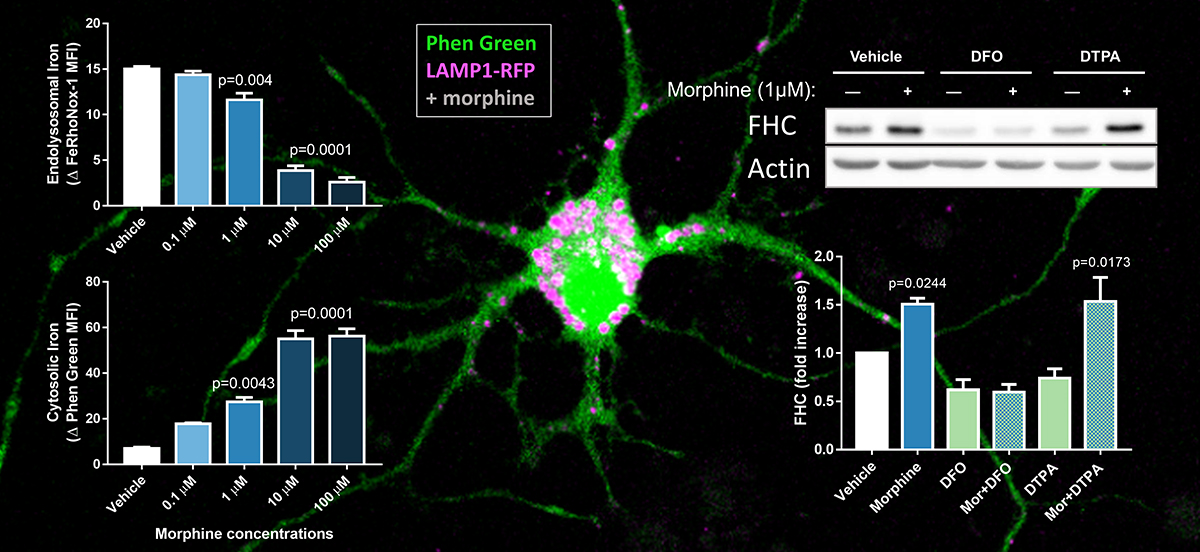Meucci Lab publishes new collaborative study on the role of iron in neuronal opioid signaling
 In collaboration with Dr. Jonathan Geiger’s lab at the University of North Dakota, the Meucci lab recently published a new study describing how iron contributes to opioid-induced morphological changes in cortical neurons. Interestingly, morphine caused the release of iron stored in neuronal endolysosomes to the cytoplasm, which led to a post-transcriptional upregulation of the iron storage protein ferritin heavy chain. Increased ferritin heavy chain levels in these neurons was associated with a reduction of dendritic spine types that are thought to play important roles in learning and memory. Morphine-mediated dendritic spine deficits and ferritin heavy chain upregulation were completely blocked by selective chelation of endolysosomal iron, suggesting that these iron stores could be a new therapeutic target for opioid-using people at risk for developing cognitive impairment.
In collaboration with Dr. Jonathan Geiger’s lab at the University of North Dakota, the Meucci lab recently published a new study describing how iron contributes to opioid-induced morphological changes in cortical neurons. Interestingly, morphine caused the release of iron stored in neuronal endolysosomes to the cytoplasm, which led to a post-transcriptional upregulation of the iron storage protein ferritin heavy chain. Increased ferritin heavy chain levels in these neurons was associated with a reduction of dendritic spine types that are thought to play important roles in learning and memory. Morphine-mediated dendritic spine deficits and ferritin heavy chain upregulation were completely blocked by selective chelation of endolysosomal iron, suggesting that these iron stores could be a new therapeutic target for opioid-using people at risk for developing cognitive impairment.
This study is featured and freely available in eNeuro, an open-access journal of the Society for Neuroscience.



